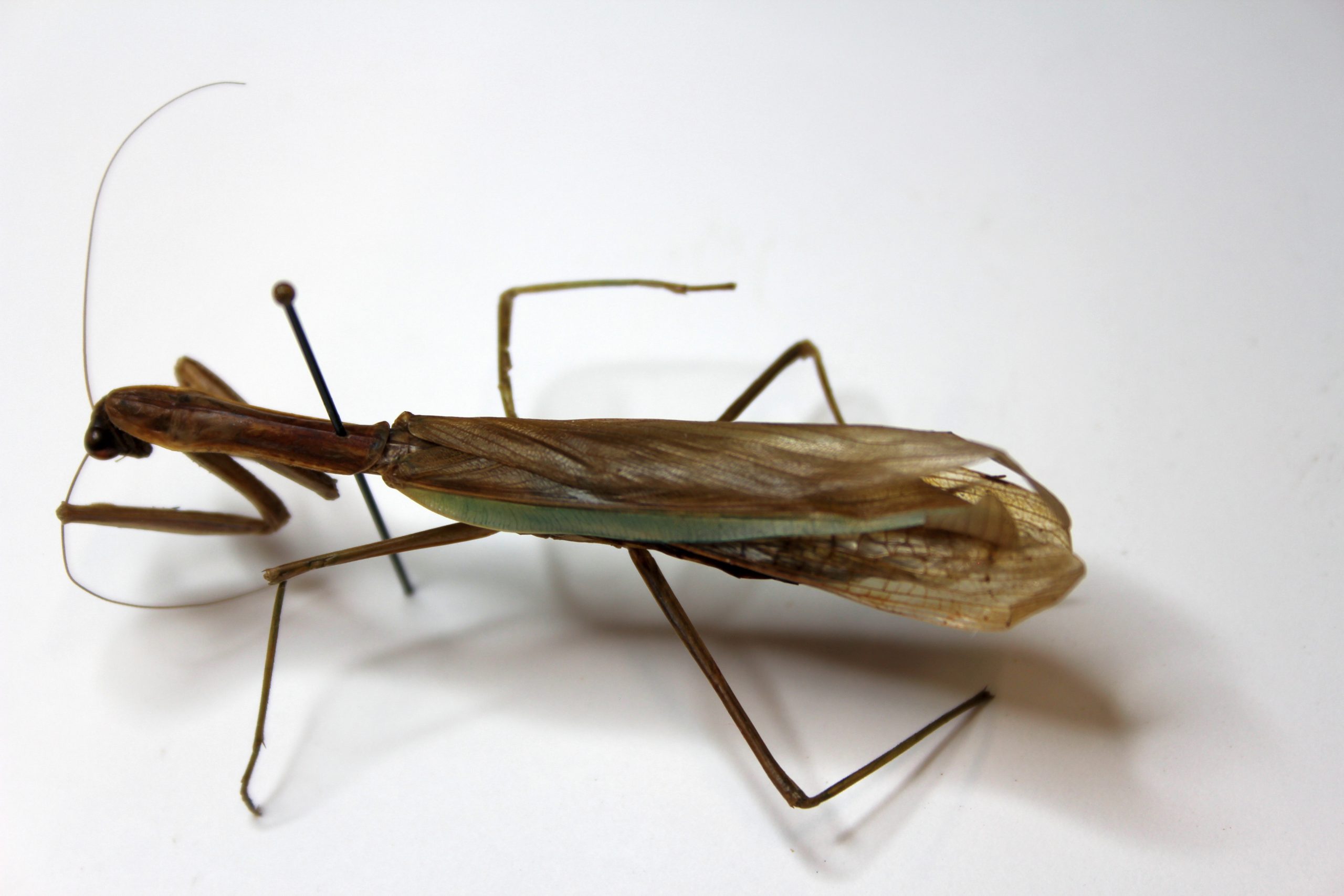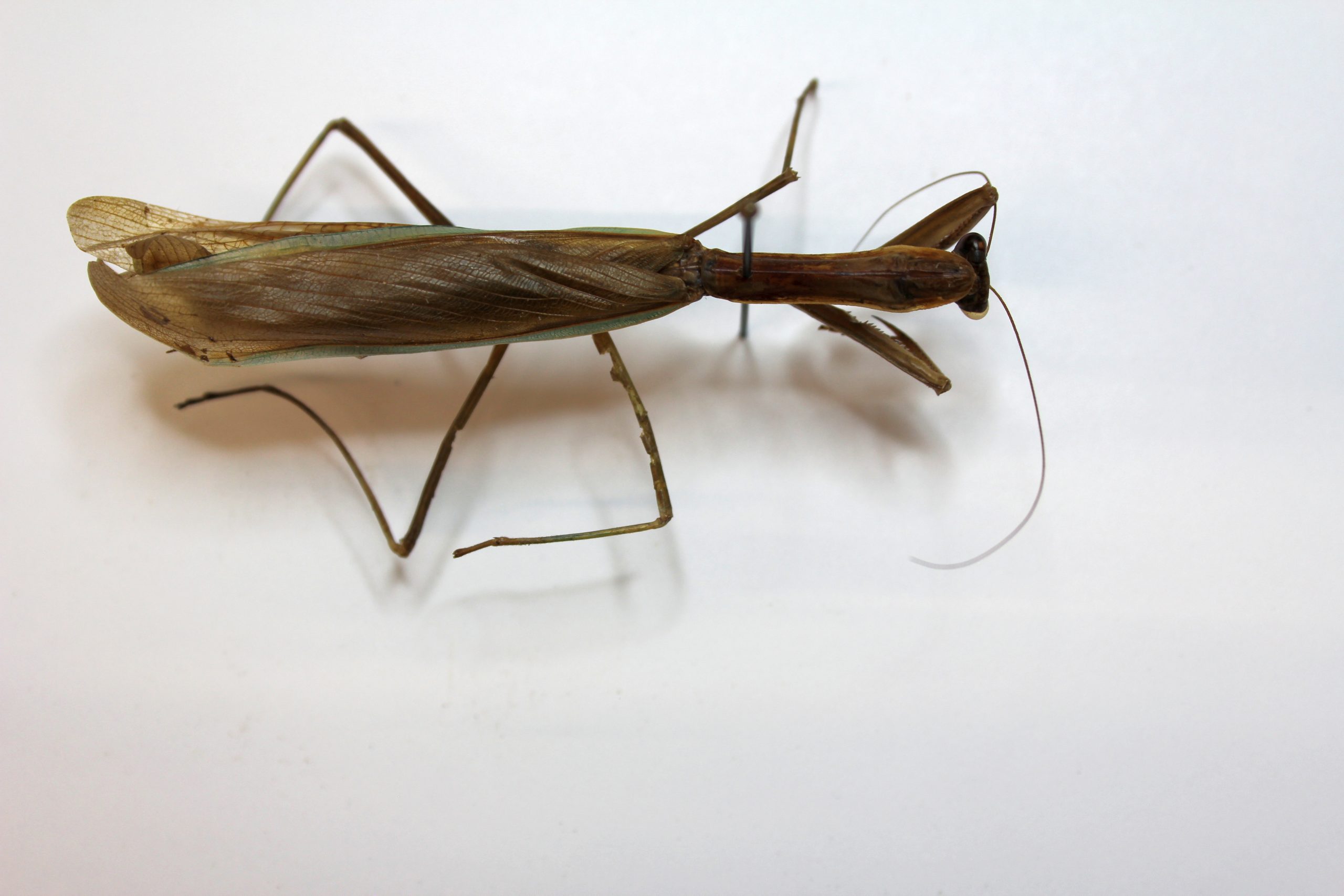43 Mantodea
Mantodea
The order Mantodea (the Greek root is interpreted as meaning either a soothsayer or a type of grasshopper) are the praying mantises, or simply mantids. Globally, there are about 2000 species, with one North American family plus two introduced species.
Mantids have an elongate prothorax that allows the head to turn dramatically. Mantids also have high visual acuity. They are lie-in-wait predators, with raptorial forelegs. They hunt using vision, and the striking speed can be 0.03-0.05 seconds. They rely on (sometimes quite elaborate) camouflage and behaviours to conceal them from their prey.
Mantids are closely related to cockroaches. They reproduce sexually and are paurometabolous. In a few species, but not all, the male requires decapitation in order to release sperm. His body can then be consumed by the female to provide extra nourishment for her developing eggs. Eggs are laid into an ootheca, which is essentially a layer of froth produced by the accessory gland that hardens on exposure to air.
The ground mantid, Litaneutria minor, is native to sagebrush areas in the extreme south of the Okanagan Valley. This species is red-listed and should not be collected. Others that you may encounter are products of the pet trade, or otherwise imported.




Feedback/Errata